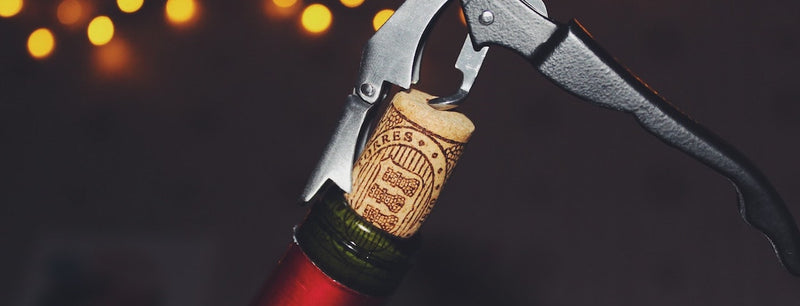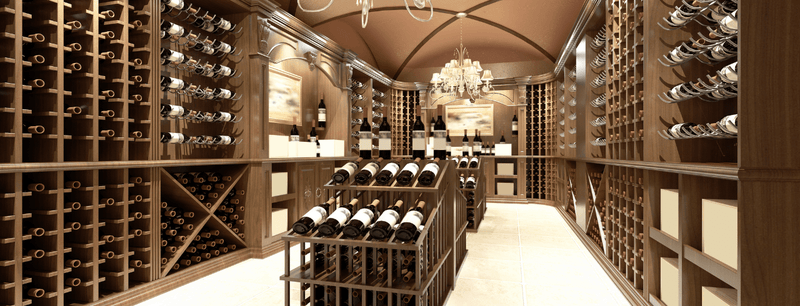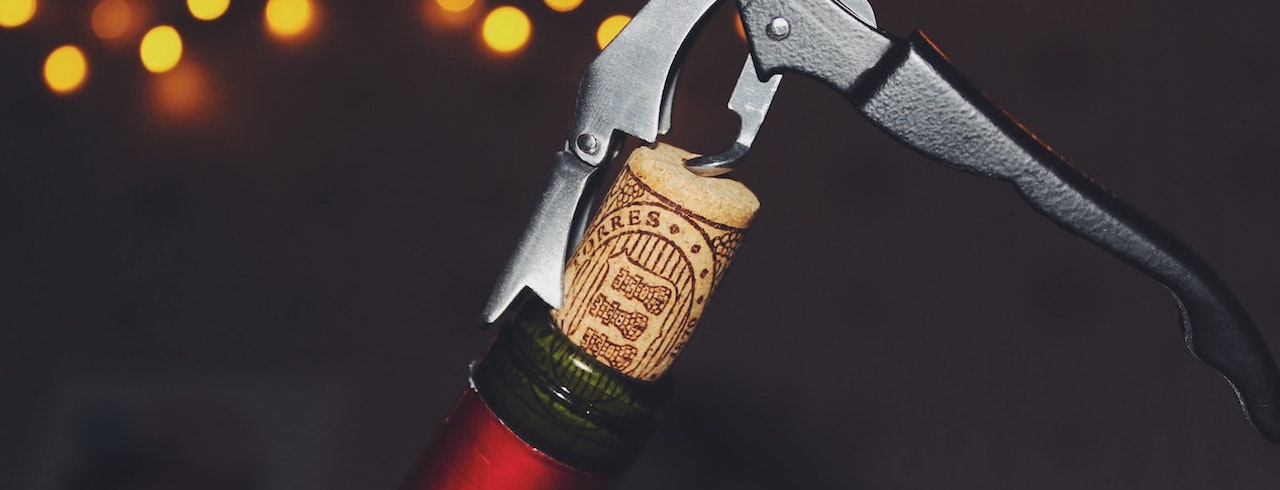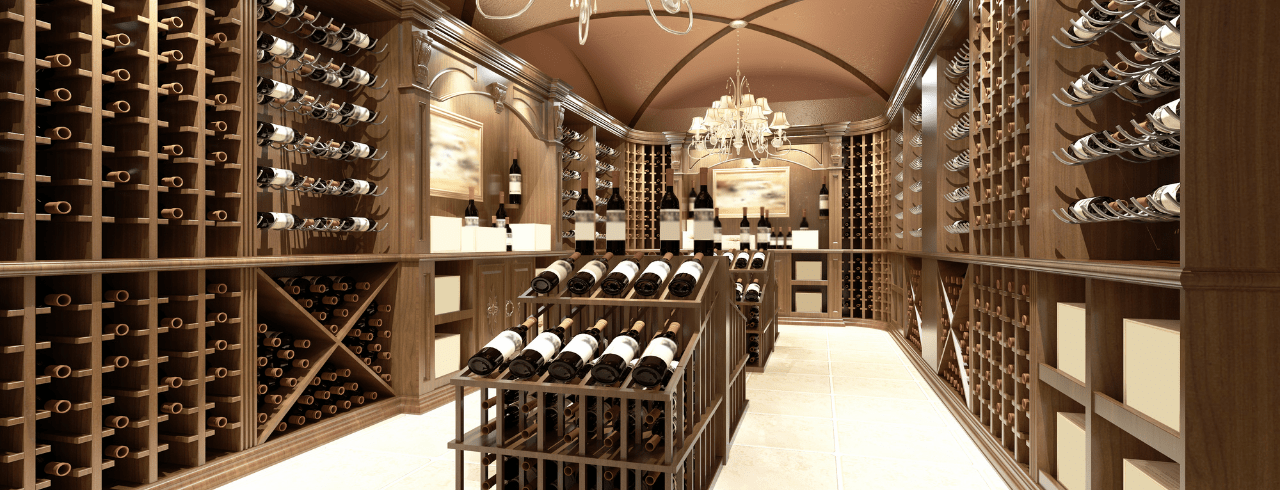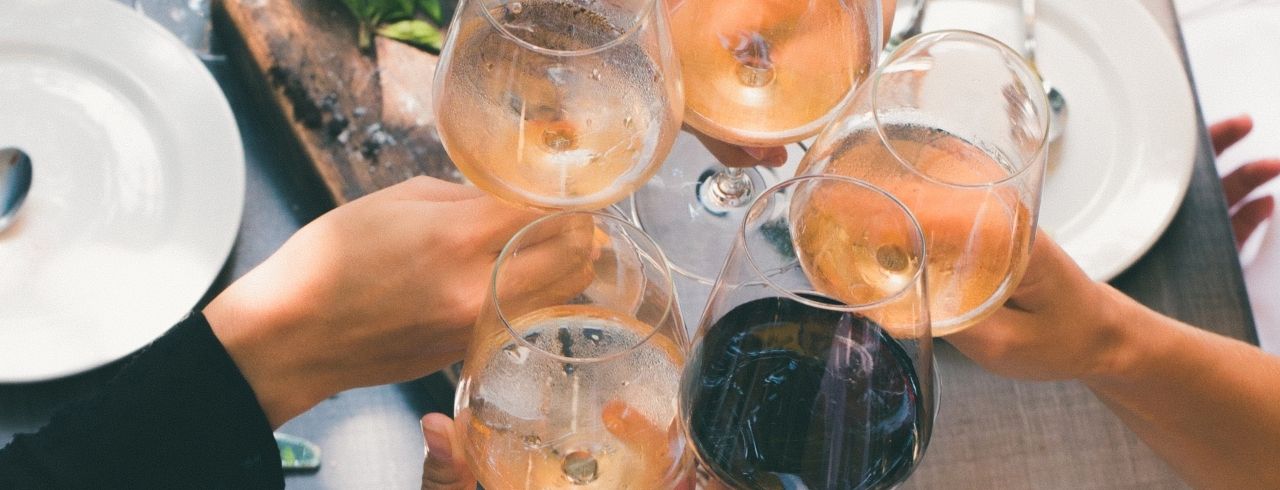
The Basics of Wine Serving Sizes
To fully appreciate the flavor, aroma, and history of your bottle, you must serve your wine in the ideal quantity and understand how certain bottles and glasses can influence the personality of your wine.
To explain these essentials and boost your vino expertise, let’s break down critical tips for wine serving and analyze the most popular types of bottles and glasses in our Wine Insiders Guide to The Basics of Wine Serving Sizes:
Serving Size Essentials
According to the U.S. Department of Health and Human Services, the recommended serving size for a typical glass of wine is 5 oz.
This amount will comfortably fit the vast majority of wine glasses and allow you to enjoy multiple glasses from almost any wine bottle.
While not specified by any government department, the recommended serving size for a tasting pour of wine is 2-3 oz.
This reduced amount will allow you to sample from multiple bottles of wine without overwhelming your palate or risking over-intoxication.
Bottles: One Size Doesn’t Fit All
Before we can pour our favorite wine into a glass, it’s important to know its bottle's size and key characteristics.
As you’ve probably noticed, there are many different kinds of wine bottles in various shapes and sizes.
The average wine bottle generally contains 750 ml (~25 oz) of liquid, which translates to five standard (5 oz) servings of wine.
But, there are a wide variety of options beyond your standard bottle.
To help you better understand and serve your favorite vino, let’s break down the crucial features of five of the most famous wine bottles:
Standard
The standard-size wine bottle is by far the most popular and iconic. Every year, it accounts for 50% of global wine sales.
If you close your eyes, you can easily picture it in your head, but what makes it the go-to bottle for wineries worldwide?
First, it offers wine in the quantity most desired by customers: 750 ml (~25 oz) with five glasses of wine inside.
Second, it has historical and cultural relevance:
Created by French winemakers in the 19th century, the 750 ml bottle worked to satisfy British wine drinkers, the primary customers of French wine, who wanted a size that better translated to their “Imperial gallon” system.
In the centuries since, this standard bottle grew dramatically in popularity, becoming the dominant option in Old and New World wine countries alike.
While there’s no scientific reason this bottle is “better” than other options, it’s synonymous with the identity of wine the world over.
Half
As you would imagine, the half bottle is half the size of its standard-sized relative.
At 375 ml (~12.5 oz), this smaller option contains 2.5 standard glasses of wine for your enjoyment.
Half-size bottles are perfect for wine lovers looking to consume a more modest amount of vino on their own or to share a couple of glasses with a friend or partner.
Split
The split bottle is a rather adorable creation designed for single-serve enjoyment.
Typically utilized for sparkling wines and Champagne, this miniature option contains 187.5 ml (~6 oz) of wine and usually fills one standard glass.
While this bottle isn’t one you’re likely to purchase often, it makes for great fun at celebrations as its diminutive appearance often elicits a smile.
Magnum
On the reverse end of the spectrum, a magnum is an extra-large option suited for gatherings of multiple people.
At 1.5 L (~50 oz), this bottle is double the size of its standard alternative and contains up to 10 glasses of wine.
While this option is great for dinner with friends, it also is a wine aficionado’s choice for red wine cellar storage, as many think these wines age better in this larger bottle.
Double Magnum (Jeroboam)
Following the logic of wine bottle names, the double magnum (a.k.a. “Jeroboam) is another step above the basic magnum.
At 3 L (~100 oz), or four times the size of a standard bottle, the double magnum contains as many as 20 glasses of wine.
While, incredibly, there are multiple bigger wine bottles, the double magnum can be a smash at hit at larger gatherings or parties totaling around 8-10 people.
Choosing the Right Glass for Your Bottle
Now that you understand the primary types of wine bottles, it’s critical to grasp how a wine glass can affect the taste, aroma, and experience of your varietal or blend.
While the standard wine glass can hold 12-14 oz of liquid, the ideal serving size is still 5 oz -- regardless of vintage, varietal, or alcohol content.
So, what else is there to know?
A lot more than you might think. To keep things simple, let’s break down the best wine glasses for the most popular categories of wine:
Red Wine
To get the most from your red wine experience, you need a glass that smooths its prominent tannins and harmonizes its balance of fruity, earthy, or spicy flavors and aromas.
The best red bottle glasses have wide openings, delivering smoother tastes and aromas, and larger bowls, allowing the wine's flavor and personality to breathe and express themselves.
The more you experience red wine, the more you’ll notice a correlation between a red body and its glass.
The standard glass of red wine perfectly suits medium to full-bodied reds, like Malbec, the Bourgogne glass supports delicate reds, like Gamay, and the large Bordeaux glass best highlights bold reds, such as Cabernet Sauvignon.
Wine Insiders Tip: When using a standard, 5 oz pour, you’ll notice a red wine glass looks particularly empty compared to white or sparkling ones. This design is intentional, as the added space brings the best qualities out of your red, so don’t over-pour to compensate.
White Wine
As whites have very different personalities than reds, they better suit an alternative style of glasses.
To bring the best out of a bottle of white wine, opt for glasses with smaller bowls and openings, which concentrate the wine’s flavors and aromas, maintain cooler temperatures, and highlight acidity.
As you get to know white wine, you’ll notice lighter-bodied whites, like Pinot Grigio and Sauvignon Blanc, come in glasses with a small bowl, while fuller-bodied whites, like oaked Chardonnay and Rioja, come in glasses with larger bowls.
This differentiation is essential, as a larger body means your white wine needs more space to express itself fully.
Sparkling Wine
The most famous glasses for sparkling wine are the flute and the coupe, but there are also other options from which to choose.
In general, the sparkling wine glass you prefer will come down to personal taste and style.
The coupe glass will comfortably hold a serving of any sparkling option, but they best suit mature sparkling wines that benefit from the aeration of a larger bowl.
While best highlighting the look of a sparkling wine’s bubbles and perfectly fitting a 5 oz serving, the iconic flute glass is serviceable but doesn’t allow the wine to express its flavors and aromas fully.
Beyond these standard options, the tulip and tapered glasses meld traits of the coupe and flute and are excellent ways to highlight your sparkling wine’s attributes.
Wine Insiders: Your New Home for Wine
Now that you know the basics of serving sizes, bottles, and glasses, it’s time to explore Wine Insiders’ fantastic selection of delicious varietals and blends.
Whether you’re looking to explore an exciting bottle from France or Italy or a diverse case mixing the best of Napa Valley, we have the bottles and wine sets you need for every meal or occasion.
For more information about wine, storage, and more, check out our Essential Wines Guide and keep up with our blog.
